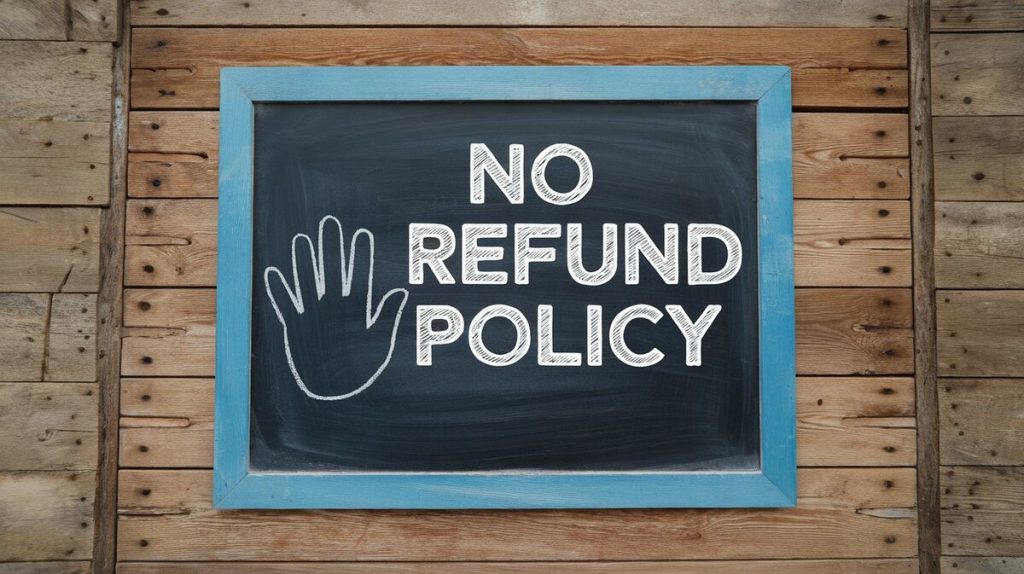A no-refund policy is often used by businesses to safeguard against losses. However, this can lead to chargebacks, where the bank reverses a transaction at the customer’s request. Chargebacks can result in financial losses, damage to the business’s reputation, and even the termination of merchant accounts if the chargeback ratio exceeds acceptable limits. This article explores the implications of no-refund policies, the legal framework surrounding them, and strategies businesses can adopt to mitigate the risks associated with chargebacks.
The Mechanics of Chargebacks
Chargebacks occur when a customer disputes a charge on their credit card. This typically happens after the customer fails to resolve an issue directly with the merchant. According to Visa, chargebacks are a consumer protection mechanism but can be costly for businesses. The process involves multiple steps:
- Transaction Dispute: The cardholder contacts their bank to dispute a transaction.
- Investigation: The issuing bank reviews the claim, sometimes requesting information from the merchant.
- Chargeback Issuance: If the claim is validated, the bank reverses the funds from the merchant’s account to the cardholder.
- Merchant Response: The merchant can dispute the chargeback by providing evidence within a set timeframe.
- Final Decision: The issuing bank makes a final decision based on the evidence.
Each chargeback incurs not only the cost of the refunded transaction but also additional fees. Repeated chargebacks can lead to higher processing fees or even the loss of the merchant’s account.
Table 1: Chargeback Process Overview
| Step | Description |
|---|---|
| Transaction Dispute | Cardholder contacts their bank to dispute a transaction. |
| Investigation | Issuing bank reviews the claim, sometimes requesting information from the merchant. |
| Chargeback Issuance | If validated, the bank reverses the funds from the merchant’s account to the cardholder. |
| Merchant Response | Merchant can dispute the chargeback by providing evidence within a set timeframe. |
| Final Decision | Issuing bank makes a final decision based on the evidence. |

Legal Considerations for No-Refund Policies
In the U.S., state laws require businesses to clearly display their refund policies at the point of sale. For example, in California, businesses must post their no-refund policy clearly, or they are obligated to provide refunds within 30 days of purchase. Compliance with these regulations is crucial to avoid legal disputes and chargebacks.
In states like New York and Texas, similar requirements exist, making it essential for businesses to be aware of the specific regulations in the regions where they operate.
Table 2: State-Specific Refund Policy Requirements
| State | Requirement |
|---|---|
| California | No-refund policies must be clearly displayed, or refunds must be provided within 30 days of purchase. |
| New York | Merchants must display their refund policy at the point of sale. |
| Texas | Refund policies must be clearly communicated; otherwise, refunds are mandatory within a reasonable timeframe. |
Risks of No-Refund Policies
Implementing a no-refund policy can significantly increase the risk of chargebacks. According to Mastercard, businesses with strict no-refund policies face a 30% higher chargeback rate compared to those with more flexible return options. This increase in chargebacks not only results in lost revenue but also additional fees and potential damage to the merchant’s relationship with payment processors.
A high chargeback ratio—typically above 1%—can lead to penalties from payment processors, including higher fees or even the termination of merchant accounts. It is crucial for businesses to monitor their chargeback ratios and implement strategies to keep them below this threshold.

Best Practices to Reduce Chargeback Risks
To mitigate the risks associated with a no-refund policy, businesses can adopt several strategies:
- Offer Store Credits or Exchanges: Providing alternatives like store credits or exchanges can reduce dissatisfaction and the likelihood of chargebacks.
- Clearly Communicate Policies: Ensure that refund policies are clearly communicated at every touchpoint, including on the website, during the checkout process, and on receipts.
- Enhance Customer Service: Resolving complaints within 24 hours can reduce chargebacks by up to 50%, according to Stripe.
- Partner with Chargeback Prevention Services: Companies like Merchanto.org, an official partner of VISA and MasterCard, offer chargeback prevention solutions tailored to business needs. This partnership can significantly reduce chargeback rates by providing advanced fraud detection and dispute resolution tools. Visit Merchanto.org for more information.
- Use Fraud Detection Tools: Implementing tools like 3D Secure, Address Verification Service (AVS), and Card Verification Value (CVV) checks can prevent fraudulent transactions, which are a common cause of chargebacks.
Customer-Centric Strategies for Chargeback Prevention
Focusing on customer satisfaction is one of the most effective ways to reduce chargebacks. Businesses should:
- Ensure Product Quality: High-quality products and accurate descriptions can prevent customer dissatisfaction, which is a leading cause of chargebacks.
- Provide Transparent Terms of Service: Clear, accessible terms of service help set customer expectations and reduce misunderstandings.
- Implement a Flexible Return Policy: Allowing partial refunds or prorated returns can satisfy customers who might otherwise resort to chargebacks.
Table 3: Impact of Customer Service on Chargeback Rates
| Service Level | Chargeback Rate Reduction |
|---|---|
| 24/7 Customer Support | 60% reduction |
| Proactive Communication | 45% reduction |
| Transparent Refund Policy | 30% reduction |
Conclusion
A no-refund policy can be a tool for businesses to protect revenue, but it carries significant risks, particularly in terms of increased chargebacks. These chargebacks can result in financial losses, additional fees, and damage to the business’s reputation. To mitigate these risks, it’s crucial to implement customer-centric practices, such as offering store credits, clearly communicating refund policies, and enhancing customer service. Additionally, utilizing fraud detection tools and maintaining transparent terms of service can help reduce the likelihood of disputes escalating to chargebacks.
Balancing the need to protect revenue with the importance of customer satisfaction requires a strategic approach. While chargebacks are an inherent risk of doing business, adopting the right preventive measures can significantly minimize their impact, helping businesses maintain both their financial stability and customer relationships.



